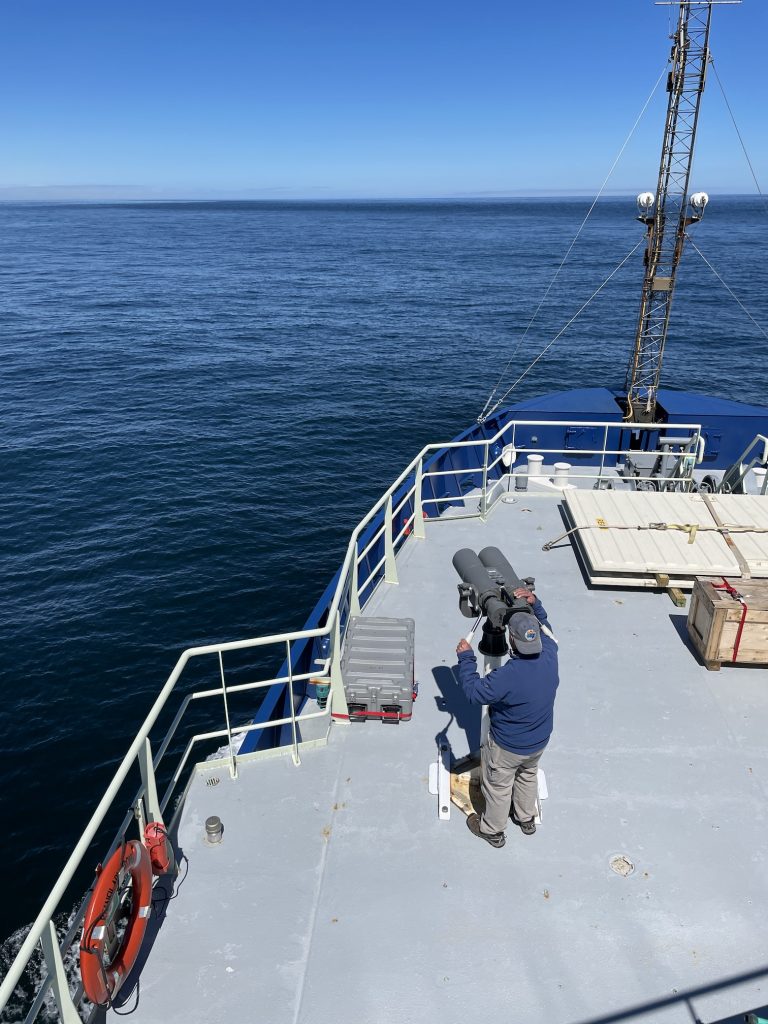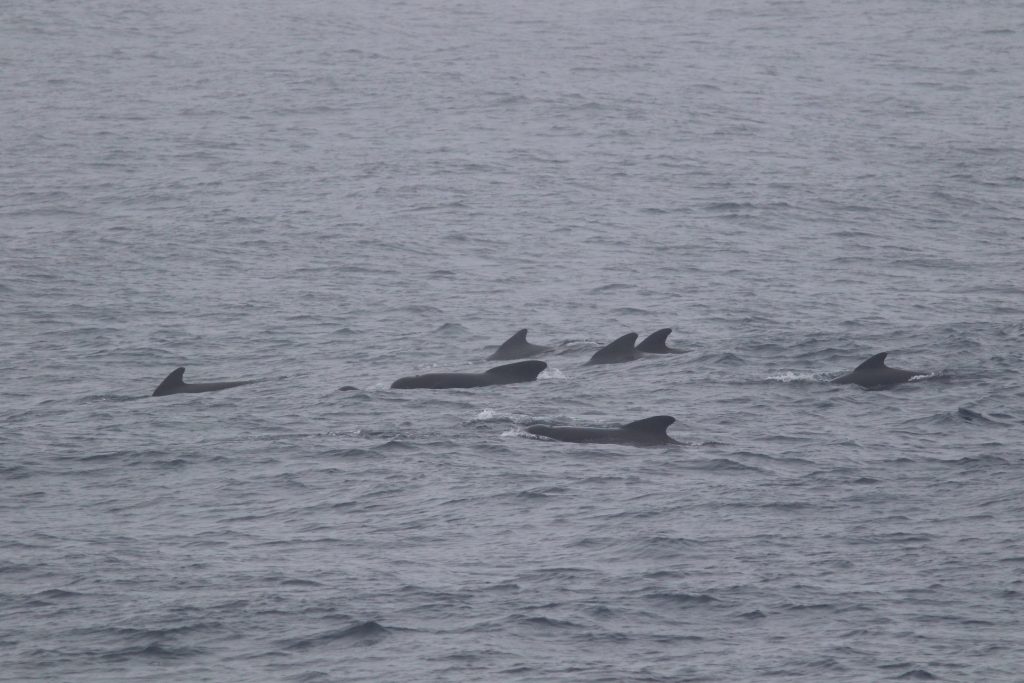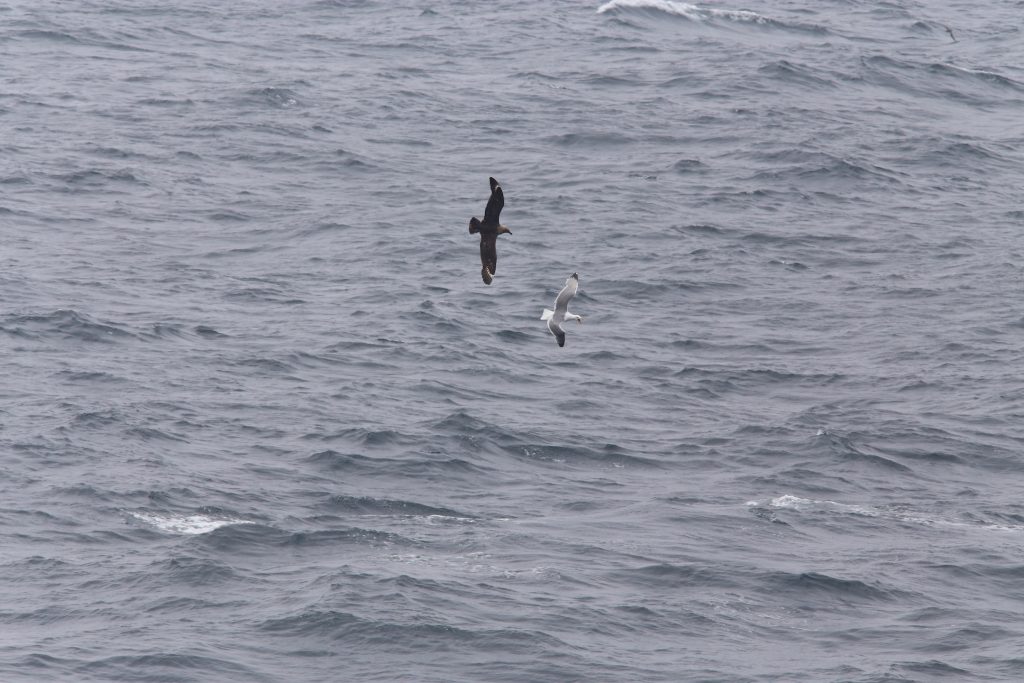
Peter Duley looking through the Big Eyes on the deck of the R/V Neil Armstrong. Credit: Sheri N. White © WHOI
NOAA Research Wildlife Biologist Peter Duley joined us again for the Irminger-9 cruise, along with the “Big Eyes” binoculars. You can read about Pete’s previous OOI adventures here and here.
Pete has joined the Irminger 9 cruise specifically to look for North Atlantic right whales in the Irminger Sea. While watching for right whales, he also notes weather, fog, and sea state conditions and documents other marine mammals and birds seen during the cruise. The goal of this effort is to gather observational data that will support the initialization of acoustic monitoring efforts in the Irminger Sea to capture right whale activities in the area.
Whale-call acoustics would be captured via “sound traps” – self-contained, ruggedized hydrophones positioned in the mid water portion of the water column. While this effort would focus on capturing right whale activity, the hydrophones would also pick up other lower-frequency calls from whales including humpback and fin whales.
The Irminger Sea is historically known as right whale habitat, and in recent years there have been right whales recorded around Iceland. Experts are looking further north for right whales as sea temperatures warm in the Gulf of Maine – a feeding area for right whales during summer months – and right whale activity is becoming less common.
While there have been no sightings of right whales as of the writing of this blog post, Pete has seen a variety of other marine mammals and birds during this cruise. Pilot whales and Atlantic white-sided dolphins were the most frequently seen. Pilot whales showed up during mooring deployments and recoveries – in pods as large as 400 that stretched as far as could be seen through the binoculars.

A pod of pilot whales on a foggy day in the Irminger Sea.Credit: Peter Duley, NOAA
Closer to Nova Scotia and now that we are approaching Iceland, there have been sightings of Humpback whales, and throughout the array site there were more sightings of Fin whales. During one mooring recovery, a Fin whale passed over the mooring cable between a mooring sphere and the aft deck.
Other marine mammals sighted include orcas, beaked whales, harbor porpoise and common dolphins, and sei whales. Sei whales share some feeding behaviors with right whales, indicating a possibility for this area to support new groups of right whales.
Bird sightings included Arctic sabine’s gulls, Antarctic brown scuua, parasitic Jaegers, thick-billed, bridled, and common murres, puffins, gannets and kittiwakes.

Recent Updates